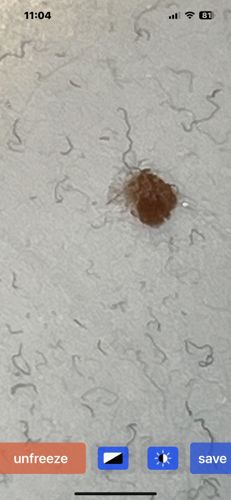Dust Mite
Scientific Name: Dermatophagoides spp. (e.g., Dermatophagoides pteronyssinus, Dermatophagoides farinae)
Order & Family: Order: Sarcoptiformes; Family: Pyroglyphidae (house dust mites)
Size: Typically 0.2-0.3 mm (200-300 micrometers), almost invisible to the naked eye.

Natural Habitat
Indoor environments, particularly in bedding, mattresses, pillows, upholstered furniture, carpets, rugs, and curtains, where skin flakes accumulate and humidity levels are suitable.
Diet & Feeding
Mainly dead skin cells (dander) shed by humans and pets. They can also feed on other organic debris like pollen, fungi, and bacteria.
Behavior Patterns
Dust mites thrive in warm, humid environments. They feed on organic detritus, particularly skin flakes, and reproduce rapidly. They are mostly sessile and found within bedding, carpets, upholstered furniture, and clothing. They do not bite or sting.
Risks & Benefits
Potential Risk: Dust mites are a significant cause of allergies and asthma. Their droppings and shed exoskeletons contain potent allergens that can trigger respiratory symptoms (sneezing, runny nose, watery eyes, coughing, wheezing) and skin reactions (eczema) in sensitive individuals. They do not transmit diseases. Benefits: As decomposers, they play a minor role in breaking down organic matter in indoor environments, but this benefit is heavily outweighed by their allergenic properties.
Identified on: 8/29/2025